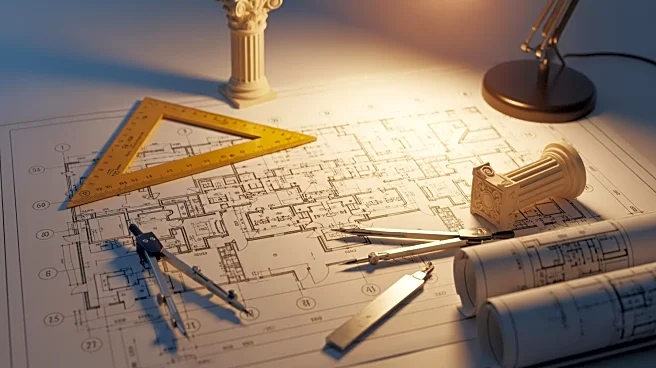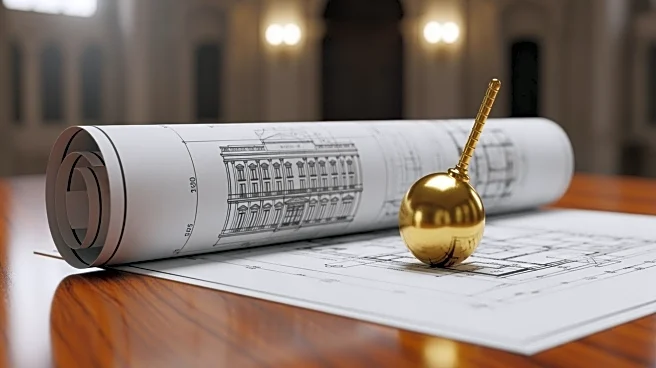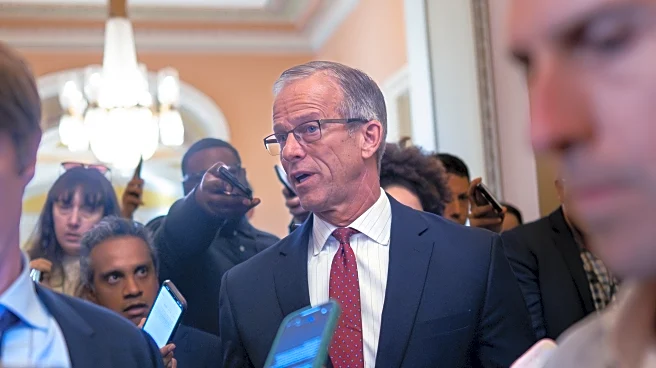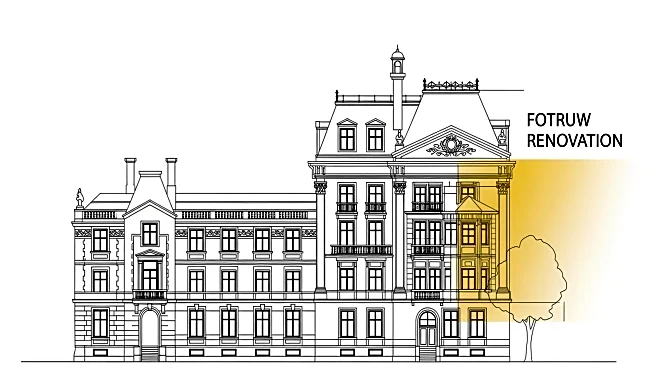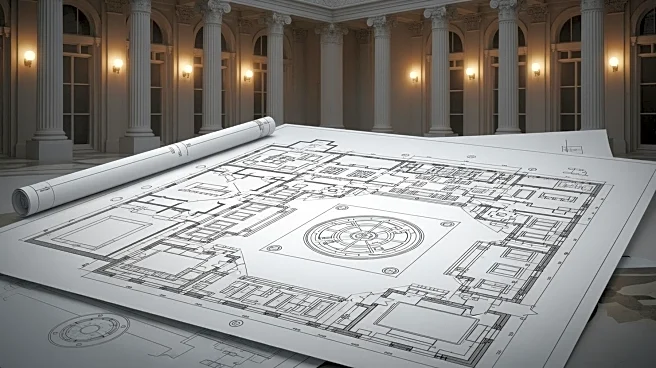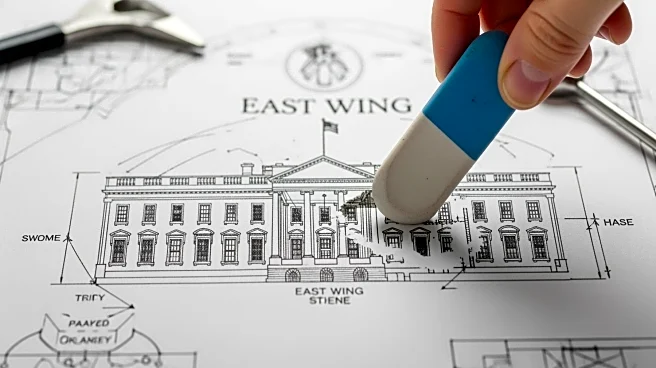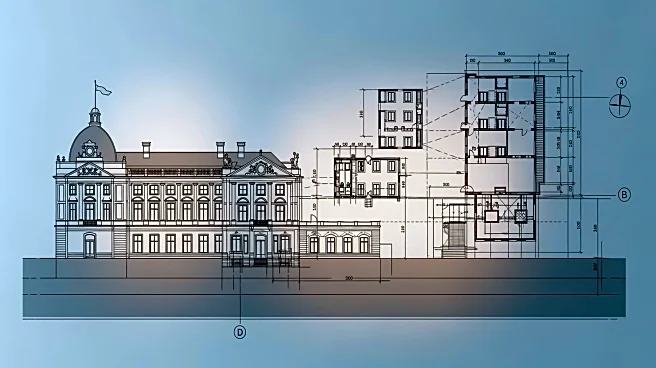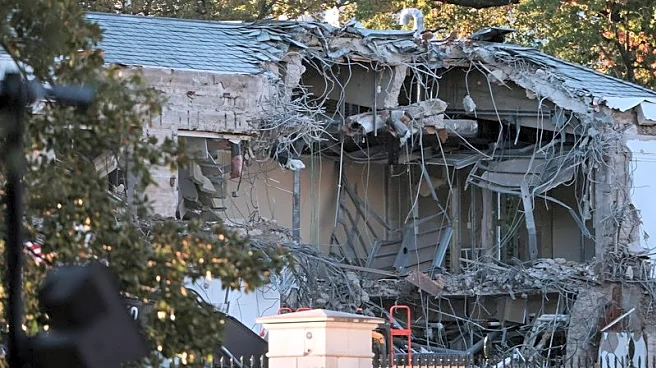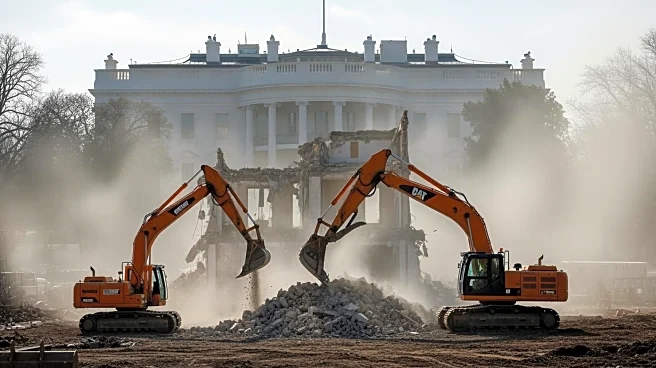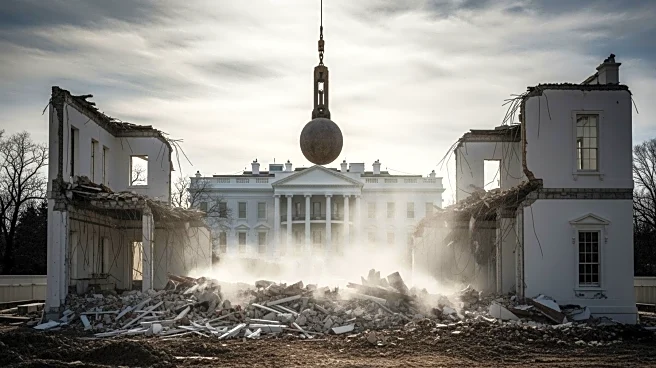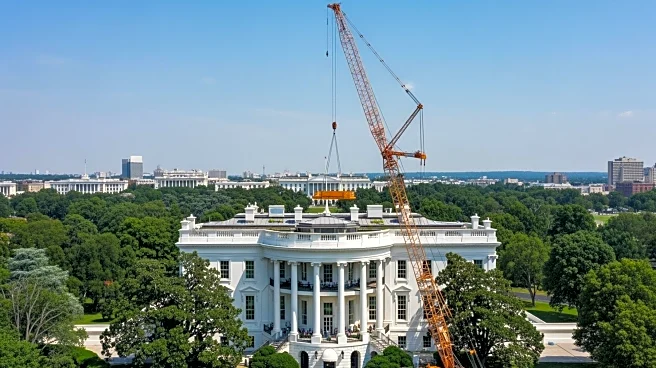What's Happening?
The White House has initiated the partial demolition of its East Wing to make way for a new ballroom, a project associated with President Trump. The construction involves cranes and bulldozers removing parts of the facade to accommodate the new structure.
Jennifer Pickens, a White House and first lady expert, discussed the development with CBS News, highlighting the significant changes being made to the historic building. The decision to build a ballroom is part of President Trump's vision for the White House, aiming to enhance its facilities for hosting events.
Why It's Important?
The construction of a new ballroom in the White House signifies a notable alteration to one of the most iconic buildings in the United States. This development could impact how future administrations utilize the space for official functions and events. The decision reflects President Trump's approach to enhancing the White House's capacity for hosting large gatherings, potentially influencing how state functions and diplomatic events are conducted. The project may also spark discussions about the preservation of historical sites and the balance between modernization and maintaining heritage.
What's Next?
As the construction progresses, there may be further updates on the timeline and completion of the new ballroom. The project could face scrutiny from preservationists concerned about changes to the historic structure. Additionally, the new facility might alter the logistics of hosting events at the White House, potentially affecting future administrations' planning and execution of official functions. Stakeholders, including historians and political figures, may weigh in on the implications of such a significant modification to the White House.
Beyond the Headlines
The decision to modify the White House raises questions about the preservation of national heritage sites. Balancing modernization with historical integrity is a challenge faced by many such projects. The new ballroom could set a precedent for future renovations, influencing how historical buildings are adapted to meet contemporary needs. This development may also reflect broader trends in how political leaders personalize and utilize official residences.
